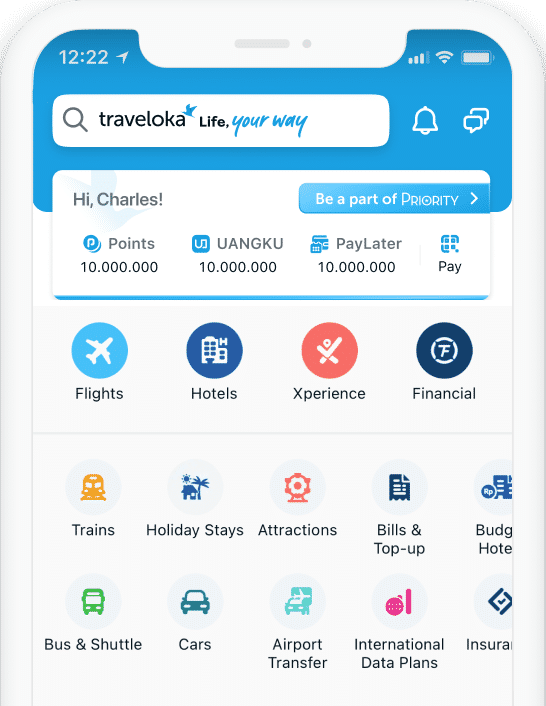
Mandaue City Hotels
- Hotel/
- Philippines(8505 Hotels)/
- Cebu(1229 Hotels)/
- Mandaue City(62 Hotels)
Destinations to Discover

Why Pay More
When You Can Pay Less?

Popular Hotels in Mandaue City
Discover what you like
Stay near exciting spots
Plenty of options, whatever your occasion
More about Mandaue City

Nestled between the cities of Cebu and Consolacion, Mandaue City is one of the 13 cities and municipalities that make up Metropolitan Cebu. As part of this prosperous urban agglomeration in Central Visayas, Mandaue enjoys the status of being one of the most visited destinations in the region.
At A Glance
Mandaue is directly across Mactan Island, where Lapu-Lapu City and the Mactan-Cebu International Airport are located. Home to more than 360,000 people, it is the third most populous city in Metro Cebu.
Mandaue is famous for the natural attractions surrounding it, its historical sites, and its exciting cultural and religious festivals. As part of the Cebu area, it is also a place where one can enjoy some of the most well-known Visayan culinary favorites.
How to Go
By plane
The Mactan-Cebu International Airport is one of the most important gateways in the Philippines. Thus, it caters to direct flights from many Asian cities, including Manila, Singapore, Hong Kong, Kuala Lumpur, Taipei, Seoul, Doha, Dubai, Busan, and Xiamen. In addition, the airport also services flights coming in from numerous Philippine locations.
By boat/ferry
The port of adjacent Cebu City is the busiest in the Philippines, accommodating as many as 16 million passengers every year. Mandaue visitors from faraway like places Manila, Batangas, Davao, Zamboanga, and Cagayan de Oro can take any one of the large passenger ships that travel to Cebu. Smaller boats and ferries also carry passengers from nearby islands like Bohol.
Getting Around
The easiest way to travel around Mandaue City is through the taxicabs plying the streets of Metro Cebu. Jeepneys are also available, but the routes can be pretty challenging for travelers to decipher. When in doubt, ask help from one of the locals. For travels involving shorter distances, consider hiring a tricycle.
Tourist Attractions
Mandaue is connected to Mactan Island via the Osmeña Bridge and the Marcelo Fernan Bridge, two photogenic bridges that also provide great views of the two islands and the surrounding waters.

Other points of interest include the National Shrine of St. Joseph, a church which was first constructed in 1601, as well as the Neo-Grec Mandaue Presidencia, a beautiful Commonwealth-era edifice built in 1937 that now serves as Mandaue’s City Hall.
Top Things to Do
Mandaue City itself might not have a lot by way of tourist attractions, but its residents do celebrate colorful fiestas that really make the city worth visiting. The most prominent of these is the annual Translacion, a parade in which the images of the Señor Santo Niño (Holy Child Jesus) and the Our Lady of Guadalupe are made to meet at the Shrine of Saint Joseph as a way of honoring the Holy Family. The ritual transfer of the statues happens just a few days before the grand spectacle of Sinulog Festival, which takes place in the month of January. The parade includes a fluvial procession down the Mactan Channel in which scores of decorated catamarans or bancas participate.

Other festivals include the Kabayo Festival, en equine fiesta held every February; the Mandaue Fiesta, a festival held every May to honor St. Joseph; and the Pasigarbo sa Sugbo, a cultural festival showcasing Cebuano heritage that takes place every year in Mandaue’s Cebu International Convention Center. During the Christmas season, a festival called Pasko sa Mandaue is also held. During the celebration, residents take to the streets to parade their beautiful parol and belen craft pieces.
Where to Eat
Mandaue is known for its rich culinary heritage. Among the most famous food items offered in the city are Visayan favorites like sugba (grilled meat or seafood), lechon, and inasal. The city is also often billed as the best place to eat a bibingka in Cebu Island.
As Cebu is a cosmopolitan place, it is also understandable that Mandaue has come to adopt the gastronomic traditions of many other cultures. To experience this, you can dine at Buffet 101 Restaurant on Mantawe Avenue, where you can enjoy a vast selection of international dishes. Nonki Japanese Restaurant on A.S. Fortuna Street, on the other hand, is one of the most well-known Japanese restos in town. If you are craving for Chinese food, then walk over to Tao Yuan Seafood Restaurant, which is located in the same complex.

For a more unique dining experience, visit Café Racer Restaurant on Piano Avenue and enjoy the restaurant’s motoring-inspired décor. Also visit the hipster Lucas Test Kitchen on A.S. Fortuna Street to order your favorite Italian and Filipino comfort food items.
Nightlife
Mandaue is quite a happening place, offering numerous nightlife venues that are frequented by young locals and expats alike. One of the most popular nightclubs is Liv Super Club in Time Square, which attracts the house music and dance crowds. On the other hand, MO2 Restobar, located at the North Reclamation Area, offers billiards, karaoke, and dining facilities in addition to a nightclub.
Where to Stay

Mandaue has excellent hotel facilities where visitors can stay for a comfortable holiday in Cebu Island. Popular hotels include the Cebu Westown Lagoon (pictured above), Alpa City Suites, BIG Hotels, and the Copenhagen East Residences, which are known for their modern amenities. There are also a variety of backpacker hostels and bed and breakfast accommodations in the city.
Travel Tips
-
Visit the local market to stock up on various native delicacies, including bibingka, masi, palitao, and kutsinta.
-
Spend a day in a resort in nearby Mactan Island, which is famous for its white-sand beaches and fantastic reefs.
-
Grab, the mobile phone e-hailing application, costs less in Metro Cebu than it does in Metro Manila. Take advantage of this by using the app to book taxi rides around the city.
Facts about hotel in Mandaue City
Total Accommodation | 62 Properties |
Popular Area | Banilad, Subangdaku |
Popular Hotel | bai Hotel Cebu, Kojo Hotels Cebu -Mandaue |
Popular Landmark | J Centre Mall, St. James Amusement Park |
Frequently asked questions

Guest reviews in hotel near Mandaue City
Why book Accommodation in Traveloka?



We’ve got more than just hotels







































 Facebook
Facebook Instagram
Instagram TikTok
TikTok Youtube
Youtube